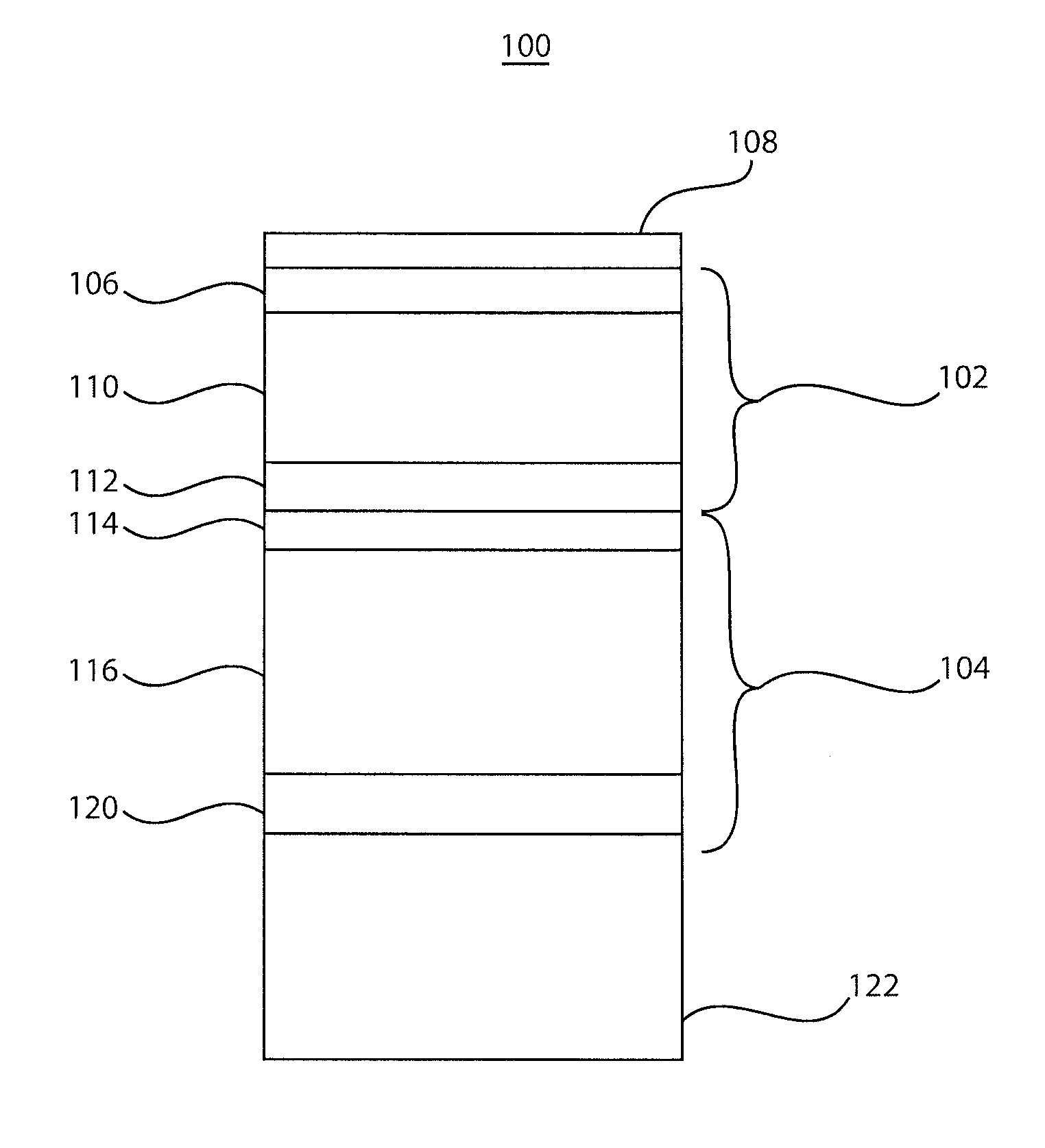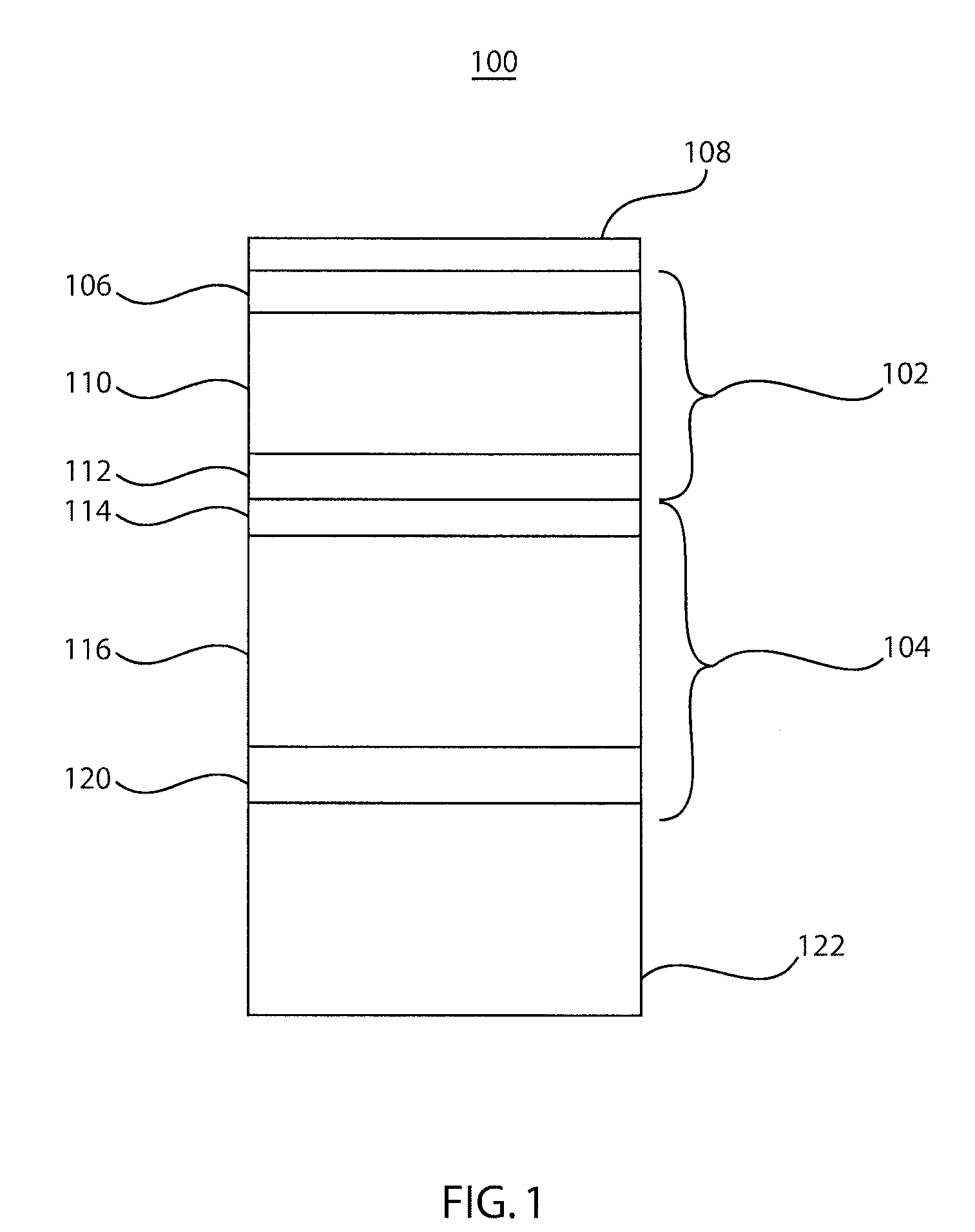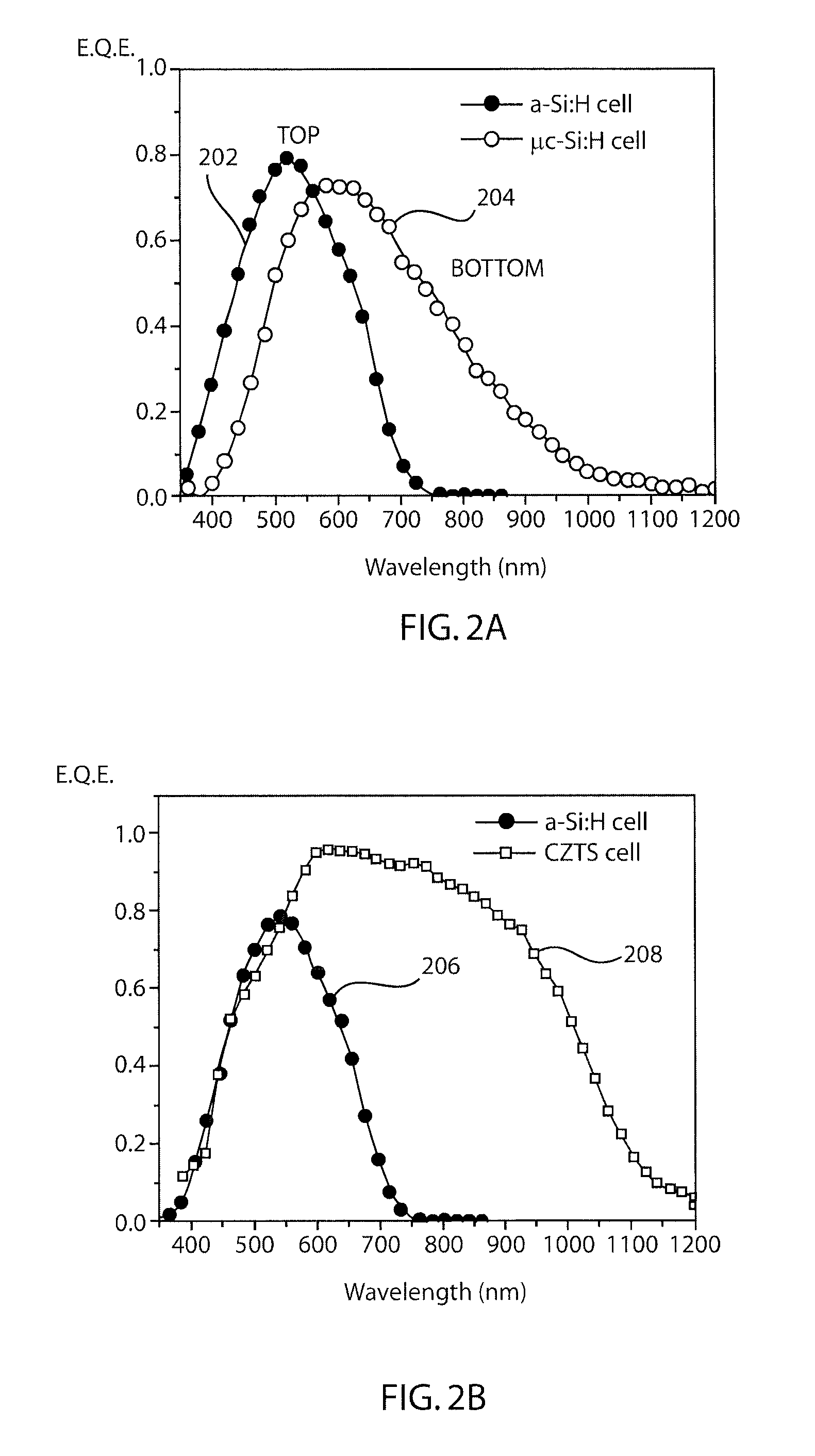Tandem solar cell with improved absorption material
a solar cell and absorption material technology, applied in the field of solar cells, can solve the problems of high cost, slow growth rate of cells during manufacture, and excessive current sharing between the top and bottom cells
- Summary
- Abstract
- Description
- Claims
- Application Information
AI Technical Summary
Problems solved by technology
Method used
Image
Examples
Embodiment Construction
[0019]In accordance with the present principles, a new tandem solar cell device structure is provided that increases productivity and performance over conventional cells which typically employ microcrystalline silicon bottom cells. Greater efficiency is provided at least in part by less current sharing between top and bottom cells in the tandem structure. Further, the present embodiments provide tandem cells composed of materials which are rapidly grown or applied with high quality. This makes the present embodiments more cost effective in addition to other advantages.
[0020]In one illustrative embodiment, a tandem cell is fabricated having a one cell fabricated using a Cu—Zn—Sn containing chalcogenide compound with a kesterite structure of the formula: Cu2-xZn1+ySn(S1-zSez)4+q wherein 0≦x≦1; 0≦y≦1; 0≦z≦1; −1≦q≦1. In a particularly useful embodiment, Cu2ZnSn(S, Se)4 (CZTS or CZTSe) is employed. CZTS has many benefits. It is low cost and environmentally harmless being fabricated using...
PUM
| Property | Measurement | Unit |
|---|---|---|
| Fraction | aaaaa | aaaaa |
| Efficiency | aaaaa | aaaaa |
| Band gap | aaaaa | aaaaa |
Abstract
Description
Claims
Application Information
 Login to view more
Login to view more - R&D Engineer
- R&D Manager
- IP Professional
- Industry Leading Data Capabilities
- Powerful AI technology
- Patent DNA Extraction
Browse by: Latest US Patents, China's latest patents, Technical Efficacy Thesaurus, Application Domain, Technology Topic.
© 2024 PatSnap. All rights reserved.Legal|Privacy policy|Modern Slavery Act Transparency Statement|Sitemap



